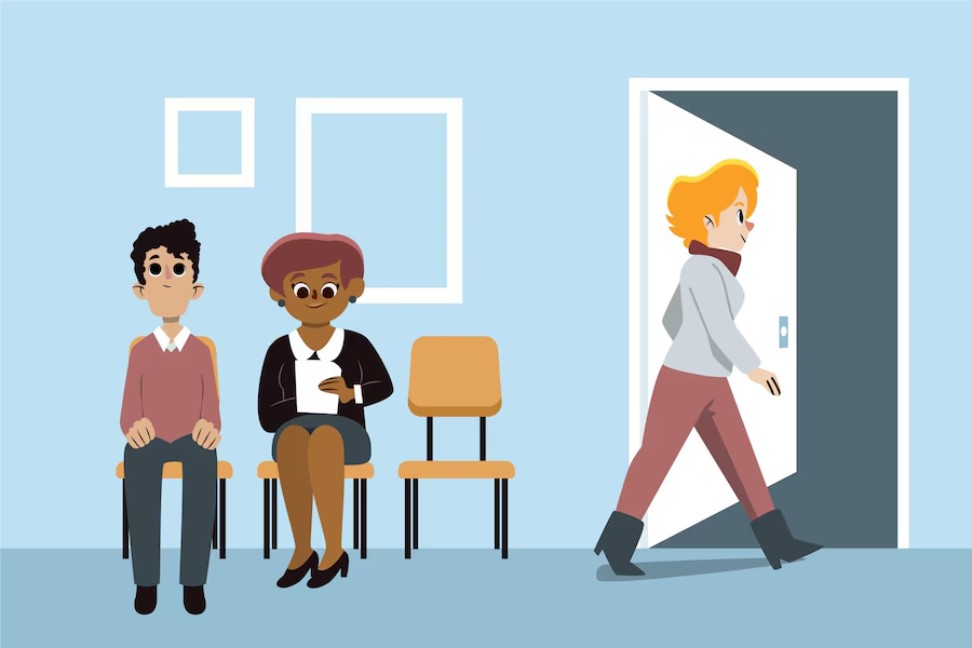The answer to the question “which of the following is the best example of the Foot-In-The-Door technique of persuasion” was option D because — getting them to agree to small favors is going to make them develop a self-perception of themselves and make them accept the latter bigger favor. The logic to this technique is that the person would not have agreed to the second, more remarkable request if they had been asked that big favor directly.
Q. Which of the following is the best example of the foot-in-the-door technique of persuasion?
(A ) Anti-Smoking advertisements that rely on celebrity spokespeople advocating for an active reduction in cigarette use.
(B ) Asking your parents to quit smoking cold turkey, then after they refuse, asking them to smoke two fewer cigarettes a day
(C ) Anti-Smoking advertisements that use graphs and charts to show how many people die from smoking-related causes annually.
(D ) Getting your parents to agree to smoke two fewer cigarettes each day, then asking them to quit altogether.
Ans: The correct answer to the question is option (D ).
In this article, I will be discussing the FITD technique in more detail. Keep reading through the end of the article and find out more information about the same!
About Foot-In-The-Door Technique
The Foot-In-The-Door technique is a method that is used for convincing people to do any specific action. When using this technique, a person complies with a small request at first and then they agree to a second after that – which might be a more remarkable one than the first one.
To put it more simply, this phenomenon works by receiving a “Yes” for asking a small favor first. After that, receiving a second “Yes” for a bigger request becomes easy.
Why Does This Technique Work?

There have been many Psychologists who tried explaining how the Foot-In-The-Door phenomenon works and how there are mainly two reasons that influence it:
Consistency
To explain the “Consistency” factor that influences it, let’s take the example of a clothing store. Suppose you arrive at a clothing store and the salesperson asks you “What color do you specifically have in mind?”. By asking just this simple question, these people try to develop a relationship with you and after answering, you see developing a relationship with them as well.
This is exactly the FITD technique at play. This is so because, after this small question gets asked to you by the salesman, you see no harm in answering them and also accepting their other offers because of the initial relationship that you built with them.
Self-Perception
There’s another factor that influences the phenomenon, and that is the Self Perception concept. After a customer already complies with the first request, they feel the urge to put up an acceptable picture of themselves and are more inclined to accept your offer that way. In this way, they feel more pleased with themselves after the self-perception they create after saying “Yes” for the second time.
Tip: If you missed out on my answer on “Which of the following is the best example of the foot-in-the-door technique of persuasion”, then you can go back to the first section of the article to give it a read.
Instances Of Foot-In-The-Door Technique
Here are a few examples of the Foot-In-The-Door phenomenon in practice for various situations/instances:
Make People Share Their Experience On Social Media
Another example of the foot in the door phenomenon is asking people to share their experiences regarding your brand/business’s products/services on social media. This is a great way of developing an initial relationship. This way, it is going to become very easy for them to be able to share a post of the product on Instagram, Twitter, Facebook, etc.
This particular bridge is also very easy to build and the probability of being on the receiving end of a “Yes” becomes high too.
Asking For Email
In this modern day and age, the most common thing that everyone has is an email. Hence, it is more likely for people to give away their email addresses to businesses and websites that ask them for them. Getting their email address would mean that it can be used for analyzing the visitor’s behavior – like determining the type of browser and device they use, and even their locations.
This enables businesses and websites to send personalized emails to the target audience and gain their interest and trust.
Asking For Donations
Now let’s take the example of a charity donation. When asking for support, you can start with smaller requests like whether the person (that you have called) would be willing to sign a petition for supporting a cause. After they agree to it, you can follow up with bigger requests like asking them to consider making a small donation to help in funding activities.
While Making Sales Calls
When it comes to sales, you could start with a “Could I send you a free sample of our newest product?”. After you see that they have accepted the offer, proceed to a bigger request like, “After you have tried out our offered sample, would you be willing to purchase the full product?”.
By doing this, the potential customers are going to be more likely to say “Yes” and accept your offer.
Some Common Queries
Here is a list of some of the more common queries that get asked related to the topic:
A: The Foot In The Door tactic is used as a compliance tactic that persuades different customers to consent to the requests from salesmen to business owners. You might also find yourself purchasing things that you never wanted when someone else uses this technique on you.
A: The Foot In The Door Technique is a really popular marketing technique that works when trying to persuade customers to purchase a thing. It is a foolproof tactic that has a very high probability of working. This is mainly due to the consistency of the made requests and also the self-perception that the person ultimately develops after having requested the smaller request.
It eventually makes them accept the bigger request as well later on.
To Wrap It Up!

The Foot In The Door Technique might seem a bit intrusive at first but just like psychologists Fraser and Freedman explained it is a method that demands compliance without putting any pressure on the other person. As a business/company, you are going to benefit a great deal from using this technique in your life.
Thank you for reading this article up till here. I hope you found the information regarding “which of the following is the best example of the foot-in-the-door technique of persuasion?” to be useful.
Read More:

